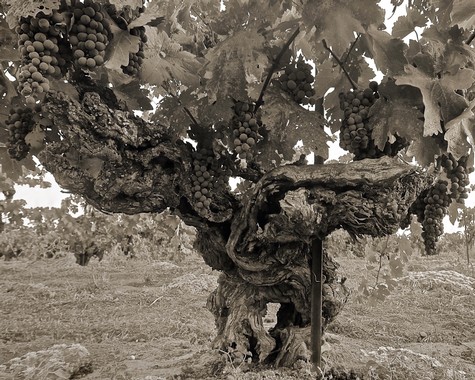Letters from Lodi
An insightful and objective look at viticulture and winemaking from the Lodi
Appellation and the growers and vintners behind these crafts. Told from the
perspective of multi-award winning wine journalist, Randy Caparoso.
Plain talk on the increasing mystique and value of old vines
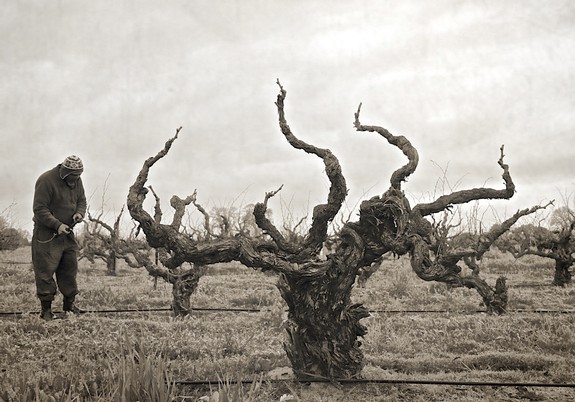
Seemingly everyone in the wine world—wine lovers, self-appointed experts and writers, sommeliers, and media “influencers” and the like—is now into “old vines.”
But why? Or, you might ask, what’s wrong with young vines—virile, vigorous vineyards planted with the knowledge of the latest technology, viticultural hindsight, and deep, deep pockets?
The answer is... it’s all good. It’s just that older vines, presumably planted during years when growers were not so smart or well-heeled, now deserve their due because, well, they’re old. Somehow they’ve survived years and years and slings and arrows of market fortunes and misfortunes, when the land they sit upon could have easily been converted into other usages—more lucrative crops or industries, houses, and highways, or of course, higher demand grapes.
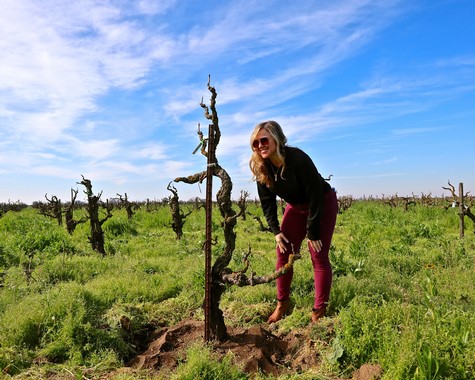
Plus, of course, older vines are cool. At least they look cool, with their massive trunks, long twisting arms, and the distinctive architecture of each individual plant. Grapevines, after all, are a little like trees in that each one, given the time and wherewithal, grows into something unique, producing wines capable of equally unique attributes. And in today’s wine market, where special attributes—many think of it as authenticity—become a stronger and stronger selling point, it’s only natural that older vine plantings can now come into their own.
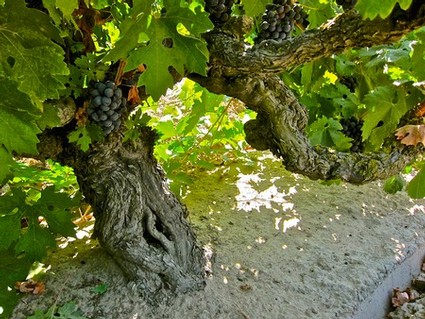
Grapevines, however, are not trees. Lest you forget, they are actually vines. Meaning, their natural predisposition is to grow endlessly long, unrestrained, to climb and cling hither and yon. As it were, several thousand years ago farmers learned that if you clip their limbs and nip their buds, you can train them enough to grow into bush-like plants.
This kind of constrained growth is actually unnatural for vines, but if you do this you can increase your chances of yielding desirable wines simply because you are forcing the plant to put less energy into growing shoots and leaves, and much more energy into producing flavorful grapes.
So let's talk about old vines, and what makes some special, beginning with...
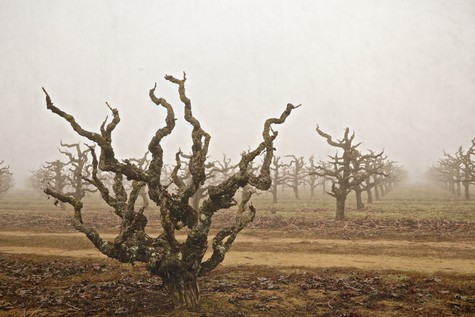
What are old vines, at least in Lodi?
Recently, the winegrowing industry in South Africa started up an official organization called the Old Vine Project. On the group’s home page, you read:
Wines that are made from old vines (vines that are 35 years and older) are a tribute to the grower’s love of the land. They exist because of the people who touched and tended to them over many years. They reflect the terroir, landscape, and people who lovingly tend these vineyards...
In South Africa, vines older than 35 years are considered plenty old because of this particular wine country’s own, unique history: 40 to 60 years ago South Africa’s wine industry was dominated by fortified wine production—similar to Lodi, in some respect—and therefore older vines were routinely uprooted in favor of grapes that were commercially and economically appropriate under those circumstances. It reached the point where, during the past twenty years when South Africa began going through its present-day fine wine renaissance, any vineyard over 30 years old was practically a miracle.
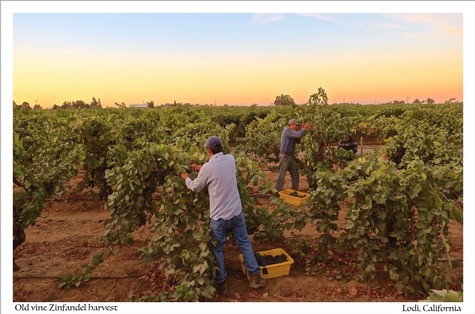
Napa Valley, as a matter of fact, is not unlike South Africa in that any vineyard over 30 or 40 years old is also a miracle. The present-day dominance of grapes such as Cabernet Sauvignon, Merlot, and Chardonnay in Napa Valley is such that the average age of a grapevine in this region is well less than 20 years old. Old vines exist in Napa Valley, but they are now a rarity, largely because the sheer cost of cultivating vineyards in this high-prestige region demands higher vigor young vines that can, ideally, produce $100 or $200 bottlings.
In France, the term used for "old vine" on wine labels is vieilles vignes. As in the U.S., where “old vine” is also commonly seen on wine labels, vieilles vignes are not bound by official rules or regulations pertaining to the actual vine age. The same for terms such as "reserve," which in France and the U.S. can mean practically anything a commercial wine producer wants it to mean. You can take your cheapest, lowest quality wine and call it a “reserve,” and in fact, that’s what many American and French producers have done and continue to do. It’s called freedom. Or liberté.
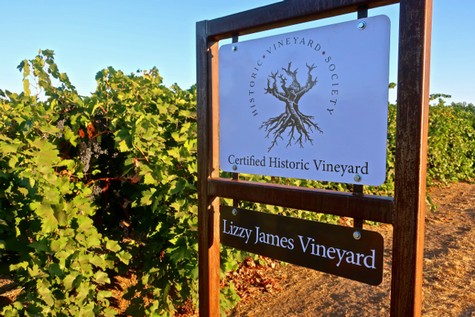
Here in California, there is now an independent non-profit, 501(c)(3) group called Historic Vineyard Society, which registers vineyards that have been ascertained to consist of vines over 50 years old. The threshold of this vine age is at least 1/3 of a given vineyard. Why just 33 percent? Because dead vines in typical old vine blocks in California are continuously replaced with new vines, which of course is what keeps these vineyards commercially viable during their lifespan. A vineyard’s biggest barrier to growing old is not plant health—it’s economic usefulness, and dead spots in vineyards are not useful.
In Lodi, for instance, there are Historic Vineyard Society-recognized vineyards with less than 40 percent of their plants dating back to an original planting date (example: Lizzy James Vineyard, first planted in 1904 but currently dominated by 40 to 50-year-old plants), and some vineyards where over 90 percent of plants go back to an original date (Bechthold Vineyard, Lodi’s oldest block, first planted in 1886).
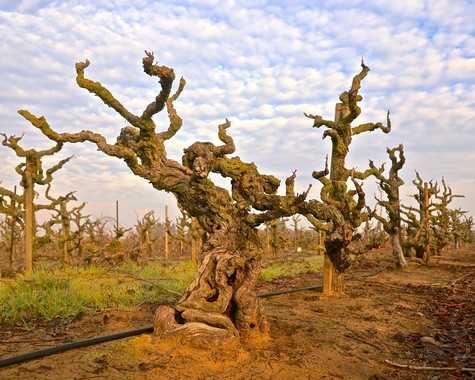
As stated on the Historic Vineyard Society website, the objective is to encourage the preservation of California’s oldest vineyards, accomplished through public recognition as well as “education on the very special nature of these historical treasures.”
In Lodi, the term "old vine" primarily refers to vineyards planted prior to the mid-1960s, which today means closer to 60 years of vine age. The mid-’60s was when the last of the region's own-rooted, free-standing, spur-pruned vines were planted. After that, towards the 1970s, Lodi viticulture went through the same changes prevalent throughout the California wine industry, ostensibly for the good. In the more recent era, trellising and the use of rootstock selections became standard procedures. The idea of free-standing vines, growing ungrafted or on lower-vigor rootstocks, became, well, old school—a quaint notion of the past. The very idea of "old vine"? Not so cool.
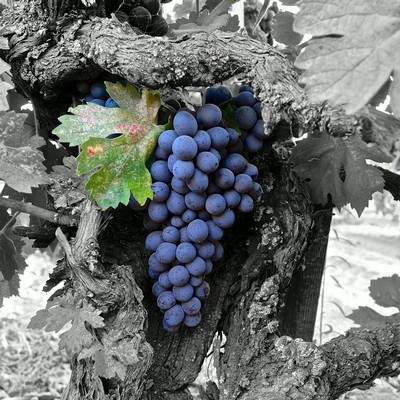
All the same, many of Lodi's pre-1960s plantings, especially Zinfandel, managed to survive that burst of "modernization" during the 1970s and 1980s. Why? Primarily because most old vine Zinfandel blocks were still productive in terms of yield, quality, and revenue. "Jug" reds were still popular up until the 1970s, and old-school varieties such as Zinfandel and Carignan were major components of these low-priced bottlings.
Then in the mid-1980s, White Zinfandel became a sensation. If not for these market shifts, many of the older vineyards not planted to grapes such as Cabernet Sauvignon, Merlot, or Chardonnay may have been long gone by now. It’s practically a miracle—or, at least, economic happenstance—that we still have vineyards such as Bechthold (planted to Cinsaut) and Lizzy James (Zinfandel).
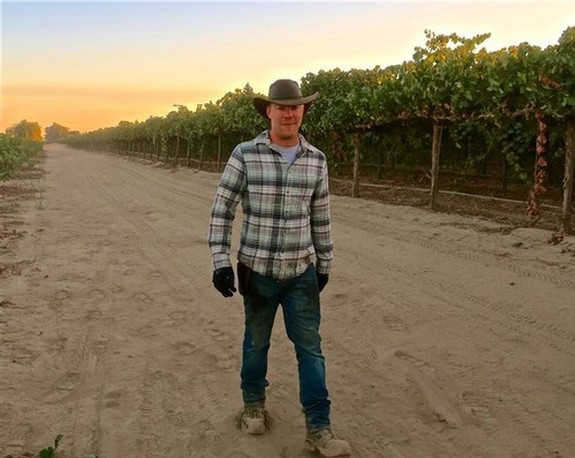
A healthy environment conducive to the long life of vines
Old vines, of course, do not become old if they do not have a healthy environment in which to thrive. The reason there are more plantings of grapevines over 60 years old in Lodi than in any other wine region in America has a lot to do with the fact that the region has the soil and climate that permits a long and fruitful life of old vines. Namely:
• A Mediterranean climate—for Lodi, meaning wet, cold (but not freezing cold) winters and warm, bone-dry summers (i.e., huge amounts of sunlight, minimally restricted by cloud cover)—in which grapes of Mediterranean origin such as Zinfandel, Carignan, and Cinsaut effortlessly thrive.
• Phenomenally deep (50 to 100 feet, with emphasis on "phenomenon"), consistent, high vigor sandy loam soils, conducive to deep rooting, healthy vines (i.e., minimized pest and disease pressure over the long haul), and dependable grape production.
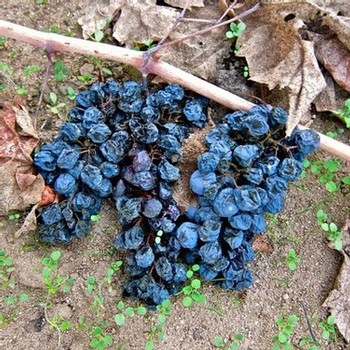
Grapevine health is directly tied to economic sustainability: Simply put, if Lodi vineyards over 60 or 100 years old weren’t capable of consistently yielding as much as 4 tons per acre of high-quality fruit year after year, decade after decade, era after era, they would have no reason to exist. It would have been hop-on-the-bus-Gus, make-new-plans-Dan.
People, we also remind you, are also part of this equation. It helps that the Lodi winegrowing industry is still dominated by families who have been farming the region for as long, or longer, than the oldest vineyards. Long-abiding Lodi families such as the Phillips, the Langes or the Mettlers may not own all of the region’s 100,000-plus acres, but they still manage most of them, even those controlled by big wineries and corporations. These families know grapevines and have to be considered part of the environment, and history of Lodi’s old vine viticulture.
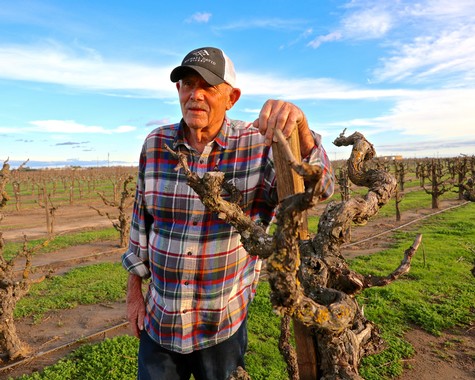
In fact, more and more during the past 10, to 15 years, a concept identified long ago by the French has become more of a factor in the Lodi appellation. The French call it terroir, which refers to a “sense of place” that can be associated not only with physical attributes defining vineyards, regions, grapes, and/or sites but also predictable attributes defining sensory characteristics of resulting wines. Terroir means “place” and wines because, in France, the two tangible observations are inextricable.
The Mediterranean climate and vigorous yet well-drained soils do produce tangibly identified qualities in vineyards and wines in Lodi. In bottlings, it’s generally a fresh fruit-forward focus with a consistently rounded sense of balance and appeal, tailor-made for today’s popular styles of wine. This is precisely the reason Lodi has grown into the largest wine-growing region in the country—well more than twice as productive as the vaunted regions of Napa Valley and Sonoma County combined. Lodi grows wines that most consumers, at least in America, actually drink.
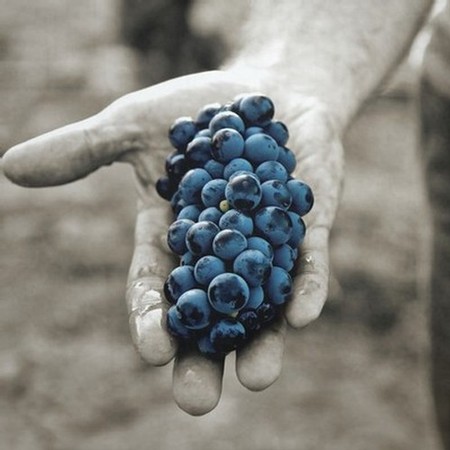
The traditional spur pruning of head-trained or vertical cordon-trained vines in itself is favorable to a longer life because it promotes a vigorous sap flow and builds resistance to disease. Because older vines are given the time to develop deeper root systems and sturdier architectures, their ability to respond to adverse weather and environmental challenges only increases after over 50 or 100 years. The older the vine, the more capable it is of producing wines that are distinct reflections of where they are grown. This is true in Lodi, and true of mature vineyards everywhere else in the world. But to get to that point, you need a healthy environment combined with a style of cultivation conducive to plant health.
Hence, Lodi’s own recent renaissance of red wines is valued for their purity of fruit fragrance and flavor, rounded sense of balance and freshness, and quite often, subtle suggestions of an earthiness distinctive to Lodi and Lodi only. A sense of a place—or terroir, as the French would describe it.
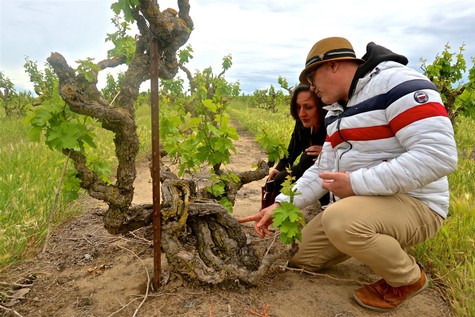
Quality, or premiumization, is key to survival
Just 20, 25 years ago, older vines in Lodi had minimal value. Most of Lodi’s pre-1960s vineyards were planted to Zinfandel, and most of that went into White Zinfandel selling for less than $10 a bottle.
While still popular, White Zinfandel is no longer the market behemoth it once was. Many consumers who once drank White Zinfandel-like water have moved on to whites, reds, or rosés of other sorts, and consumers who still prefer light, sweet, fruity wines have moved on to Muscats or the huge variety of fruit-flavored wines. Today’s wine market is far more varied, and there is plenty of everything for everyone.
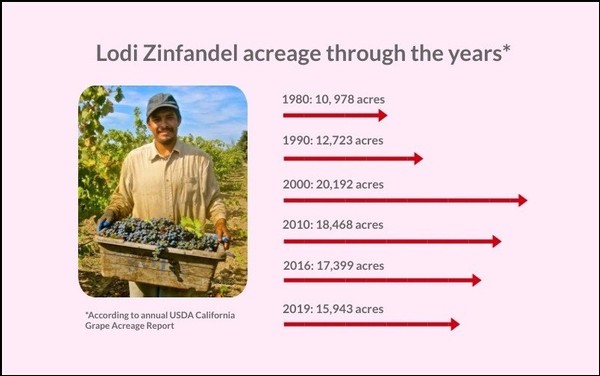
Zinfandel is still the most widely planted grape in Lodi, although the region’s acreage now hovers closer to 16,000 acres, down from over 20,000 acres during the height of the White Zinfandel craze. The grape’s current métier is primarily as an “old vine” varietal red, selling for mostly between $12 and $30.
Because Lodi’s older vineyards, almost as a rule, consist of non-trellised, free-standing vines on single stakes which preclude mechanization, demanding cultivation and harvesting by hand, it is generally understood that the ever-increasing cost and dearth of labor puts the survival of old vine plantings in serious jeopardy. Theoretically, an old vine planting no longer pencils out if grapes aren’t sold at high enough prices to produce wines selling for, say, $16 to $20 minimum. In ten years, that minimum maybe $30, and end up weeding out a significant chunk of Lodi’s currently existing old vine plantings.
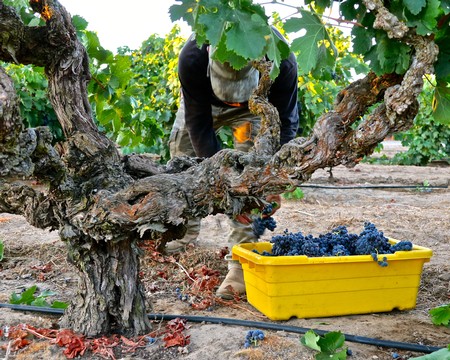
Apart from intrinsic vine health, the one advantage of older vineyards in Lodi is that they are, in fact, physically capable of producing wines of not just exceptional quality, but also with distinctive attributes identifiable as very much “Lodi,” in a terroir-related sense. And the older a vineyard gets, the higher the percent chance that an economic threshold—related to grape/bottle price, the sheer quality of the product as well as a sensory distinction that can create its own demand, especially in the case of vineyard-designated bottlings—can be reached. In the parlance of today's wine economists, this is called premiumization; for old vines, something tantamount to survival.
This, of course, begs the basic question: In what ways are older vine wines superior to younger vine wines? We are not, in this case, talking about whether a Cabernet Sauvignon from an outstanding vineyard in Napa Valley planted only 15 years ago is “better” than a Zinfandel, Carignan, or Cinsaut planted in Lodi over 100 years ago. If you prefer a deep, dense, monolithic Napa Valley Cabernet Sauvignon, that’s always a better wine for you. But if you can appreciate the fresh fruit perfumes and gentle sensory markers of ancient vine Zinfandel, Carignan, or Cinsaut from Lodi, those wines are just as good or better for you.
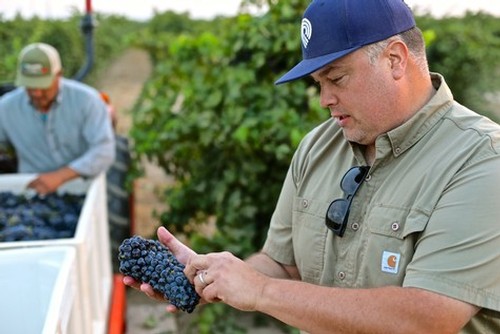
The question, rather, is this: Does a Zinfandel, Carignan, or Cinsaut from vines over 100 years have a leg up on a Zinfandel, Carignan, or Cinsaut from vines less than 50 years old? In a recent presentation of his wines under the Turley Wine Cellars and Sandlands labels, winemaker/grower Tegan Passalacqua—who is responsible for grapes and wines from nearly 100 different vineyards up and down the state of California—put it this way: “The older the vine, the better chemistry of wines, which is something we constantly prove with our own analysis of components such as phenolics and pH.”
Passalacqua can speak on this with authority because, in the case of vineyard sources going into his two prestige brands, younger vines are picked and vinified separately from older vines, even when grown next to each other within the same blocks. Says Passalacqua: “Picking separately gives us a true standard. In all my years working with vineyards throughout the state, I can think of only one instance where a wine from younger vines was better than a wine from older vines. Not only can you test this, you can taste the difference.”
Ergo, not only do old vines look cool, with each vineyard telling its own special story, but they also make cooler—that is, the most interesting—wines.
All the more reason to drink old vine wines!
